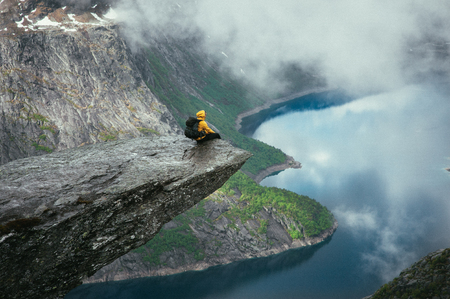Discovering Citizen Science in the UK
Across the rolling hills of the British countryside and within the heart of our bustling cities, a quiet revolution is taking place. Ordinary people—families, birdwatchers, ramblers, students—are stepping into the world of citizen science, turning their curiosity and passion for nature into powerful tools for conservation. In the UK, this movement has blossomed in recent years, as communities rally to protect native wildlife and precious habitats threatened by modern challenges. Through citizen science, anyone can contribute to vital research projects, whether it’s counting butterflies along a village footpath or recording birdsong at dawn in a city park. This collective effort bridges generations and backgrounds, uniting people with a shared purpose: to better understand and safeguard the natural beauty that makes Britain unique. With every photograph taken and observation recorded, ordinary citizens become unsung heroes of conservation, making extraordinary contributions that shape our understanding of local ecosystems and inspire hope for the future.
2. The Power of British Wildlife Photography
In the heart of the British Isles, where rolling moors meet ancient woodlands and wind-swept coastlines, wildlife photography has become a powerful force for conservation. Through the lens, photographers capture fleeting moments—an otter gliding through a Scottish loch at dawn, or a red kite soaring against the patchwork skies of Wales. Each image is more than just a visual delight; it is a testament to the incredible biodiversity that flourishes across our islands. These photographs not only celebrate nature’s splendour but also provide invaluable records for scientists and citizen science initiatives alike.
British wildlife photography stands apart in its ability to evoke a sense of place. From the rugged peaks of the Lake District to the wildflower meadows of East Anglia, every photograph tells a story rooted in local habitats and traditions. For many Britons, these images stir memories of childhood rambles or Sunday walks along hedgerows alive with birdsong. Yet, they also remind us of what is at stake as habitats shift and species face new threats.
Wildlife photography plays several essential roles in UK conservation efforts:
| Role | Description |
|---|---|
| Documentation | Captures changes in species distribution and behaviour over time, supporting scientific research. |
| Education | Engages the public with stories of native flora and fauna, fostering appreciation and stewardship. |
| Advocacy | Highlights pressing conservation issues such as habitat loss or pollution through compelling imagery. |
By shining a light on Britain’s lesser-known inhabitants—from secretive pine martens in Highland forests to rare orchids clinging to chalk downs—photographers help nurture a national consciousness attuned to the beauty and fragility of our natural heritage. Their work inspires action, inviting communities to participate in citizen science projects that shape conservation strategies for generations to come.
![]()
3. Connecting Communities with Nature
Across the rolling hills of the Lake District and the rugged coastlines of Cornwall, a quiet revolution is unfolding—one that weaves British citizens into the living tapestry of their local landscapes. Through citizen science and wildlife photography projects, people from all walks of life are rediscovering the countryside not just as a backdrop, but as a shared home deserving care and respect.
Whether it’s families heading out at dawn to track hedgehogs in suburban gardens or pensioners photographing butterflies along ancient footpaths, these collective efforts are more than data gathering—they’re about forging connections. Each photo shared and species logged becomes a thread tying individuals to one another, as well as to the wild heart of Britain itself.
These initiatives often blossom into thriving communities. Local groups gather for dawn chorus walks, organise bioblitz events, or simply share sightings online. The simple act of noticing—a fox crossing a field at dusk, or the return of swallows in spring—becomes an invitation to belong. In these moments, stewardship is born: people feel compelled to look after their patch of green, inspired by both camaraderie and the lands quiet wonders.
Through these shared experiences, a profound sense of place is fostered. The countryside ceases to be an abstract concept; it becomes personal and precious. As friendships grow over muddy boots and camera lenses, so too does a deep-rooted commitment to safeguarding the natural heritage that defines Britain’s character and spirit.
4. Icons of the UK: From Red Squirrels to Highland Wildcats
Across the winding rivers, misty moors, and ancient woodlands of the United Kingdom, wildlife icons quietly shape the character of our countryside. Each species, from the elusive Scottish wildcat prowling in the Highlands to the playful red squirrel darting through the treetops of Northumberland, holds a special place in the nation’s heart. These creatures are not just subjects for admiration—they are at the centre of stories told by everyday people through citizen science and wildlife photography.
Through keen observation and shared snapshots, citizen scientists have become guardians of these treasured species. The humble hedgehog, once a common sight in British gardens, now relies on regular monitoring and photographic records submitted by communities to map its dwindling habitats. In return, local conservation groups use this collective knowledge to create safe corridors and campaign for their protection.
To illustrate how citizen engagement is making a difference, let us take a closer look at some beloved British species and their habitats:
| Species | Habitat | Citizen Science Actions | Photographys Role |
|---|---|---|---|
| Red Squirrel | Woodlands (North England & Scotland) | Sighting surveys, feeding station monitoring | Captures evidence of presence and behaviour |
| Scottish Wildcat | Highland forests | Camera trap data collection, scat surveys | Identifies individuals and tracks movement |
| Puffin | Coastal cliffs (e.g., Farne Islands) | Nest counting, breeding success reports | Documents seasonal changes and threats |
| Hedgehog | Urban gardens & rural hedgerows | Night-time sightings, roadkill mapping | Highlights hotspots needing protection measures |
| Barn Owl | Barns & open farmland across UK | Nest box checks, pellet analysis | Provides insights into diet and habitat health |
This partnership between passionate volunteers and nature tells a uniquely British tale—one where technology and tradition meet under ever-changing skies. Through their lenses and notes, citizens ensure that future generations will continue to glimpse fox cubs at dusk or listen for the haunting call of the curlew across lonely fens. By joining these efforts, anyone can help keep alive the wild heart of Britain, one photograph and one record at a time.
5. Simple Steps: How to Get Involved
Download British Citizen Science Apps
Start your journey by exploring trusted UK-based apps like iRecord, BirdTrack, and Mammal Mapper. These platforms let you log sightings of birds, mammals, insects, and plants from your local walks or garden. Your records become valuable data for conservation organisations monitoring changes in wildlife populations across the country.
Connect with Local Projects
Many community groups across Britain welcome new volunteers keen to contribute. Look out for projects run by The Wildlife Trusts, RSPB, or local conservation societies. Whether you’re helping to survey hedgehogs in rural lanes or mapping butterflies on city commons, there’s a project nearby that needs your curiosity and care.
Respectful Wildlife Photography Guidelines
If you’re capturing the UK’s wild beauty through your lens, always prioritise the welfare of animals and their habitats. Stay on marked paths to avoid trampling sensitive ground-nesting sites or wildflower meadows. Use a long lens to keep a respectful distance and avoid flash photography, especially with nocturnal creatures. Remember, patience and quiet observation often reward you with the most enchanting moments.
Share and Inspire
Once you’ve gathered your observations or images, upload them to relevant citizen science platforms and share them with local nature groups online. Your contributions help paint a richer picture of Britain’s biodiversity and can inspire others to tread gently and look closer at the natural world around them.
6. Future Hopes for Conservation
As we look to the horizon, the promise of citizen science and wildlife photography stretches far beyond mere documentation—it holds the power to shape the very soul of conservation in the UK. Each photograph, each sighting logged by passionate individuals, is more than a fleeting moment; it becomes a thread in the intricate tapestry of our shared landscape. The gentle persistence of citizen scientists, treading through dew-soaked meadows at dawn or pausing quietly beneath ancient oaks, forms a chorus of care that echoes across the countryside.
This national heart for nature—so deeply woven into British identity—has the potential to transform not just habitats but communities. When ordinary people become stewards of the wild, their stories inspire neighbours and strangers alike, nurturing an ever-growing awareness that conservation is not a distant pursuit but a daily act of kindness to our land. The long-term impact could be profound: healthier woodlands, thriving hedgerows bustling with life, rivers running clear once more—a mosaic restored by many hands working in unison.
Looking ahead, one can imagine a future where technology further bridges the gap between people and place. Apps and online platforms will continue to bring together enthusiasts from Cornwall to the Cairngorms, making it easier than ever to share sightings and contribute valuable data. Yet, amidst all innovation, it is the simple acts—pausing to watch a red kite wheel overhead or quietly recording the first snowdrop—that keep us rooted in the present and mindful of what we stand to lose.
Perhaps most importantly, citizen science reminds us that every voice counts. Whether you are seasoned in fieldwork or new to the world of wildlife photography, your participation helps write a hopeful story for Britain’s landscapes. By fostering a culture where everyone feels empowered to observe and protect nature, we sow seeds for generations yet unborn—children who will know skylarks by song and otters by their playful trails along riverbanks.
In this way, conservation becomes less about boundaries on a map and more about belonging—to each other, to wild places, and to a tradition of stewardship as old as the rolling hills themselves. With continued dedication and collective wonder, there is every hope that our patchwork countryside will remain vibrant long into the future—alive with both memory and promise.


